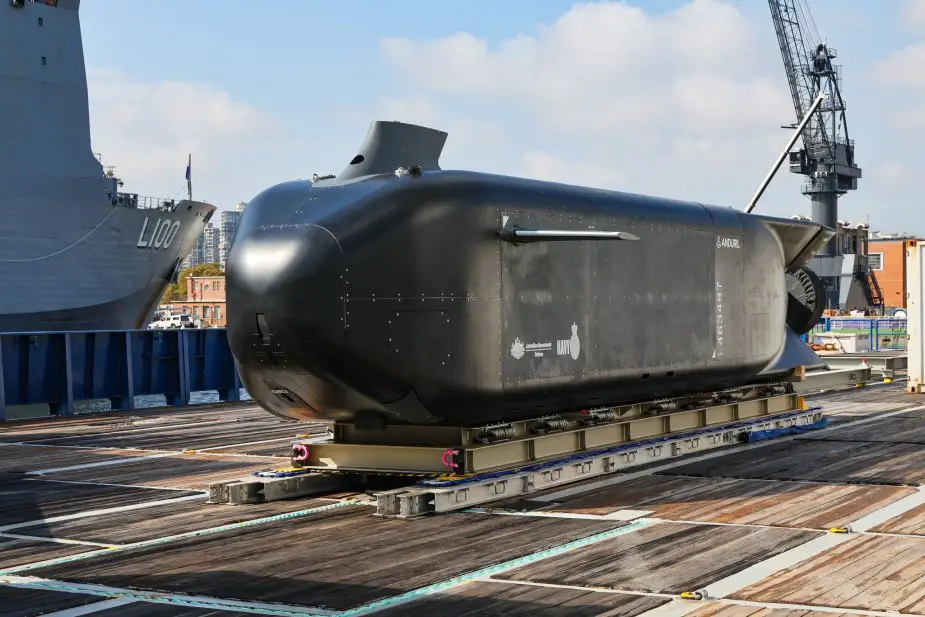Breaking news
Anduril Industries delivers Ghost Shark Extra Large AUV to Australia Navy.
According to a PR published by Anduril Industries on April 17, 2024, the Royal Australian Navy, collaborating with the Advanced Strategic Capabilities Accelerator (ASCA), and the Defence Science and Technology Group (DSTG), has announced the successful early delivery of the first prototype of the "Ghost Shark." This prototype is part of a project to develop three extra-large autonomous undersea vehicles (XL-AUVs).
Follow Navy Recognition on Google News at this link
 Ghost Shark Extra Large Autonomous Underwater Vehicle. (Picture source: Anduril Industries)
Ghost Shark Extra Large Autonomous Underwater Vehicle. (Picture source: Anduril Industries)
This milestone was achieved under a $140 million contract aimed at designing and building these vehicles within three years, exclusively in Australia. David Goodrich, the Executive Chairman and CEO of Anduril Australia, confirmed the project is progressing ahead of its original schedule and within the allocated budget.
About the XL-AUVs
The strategic utility of Extra Large Unmanned Underwater Vehicles (XLUUVs) is becoming increasingly significant in modern naval operations.
XLUUVs offer enhanced capabilities while minimizing risk to personnel, which is crucial for maintaining a strong naval presence in contested regions without escalating conflict.
Their operational efficiency and cost-effectiveness are beneficial, as they reduce the need for extensive logistical support and human resources, key considerations in an era of scrutinized defense budgets.
Integrating these autonomous vehicles into broader networked operations enhances overall naval effectiveness, ensuring comprehensive maritime domain awareness and expanding the reach and impact of naval forces.
However, the deployment of such advanced technologies is not without challenges. Technological hurdles such as reliable undersea communications and navigation are significant. Overcoming issues like high latency communications, noise, and signal interference caused by water are crucial for maximizing the operational capabilities of these unmanned systems.
Moreover, the development of XLUUVs like the Orca has encountered delays and budget overruns, attributed to the complexity of the technology and external factors like supply chain disruptions during the pandemic.























